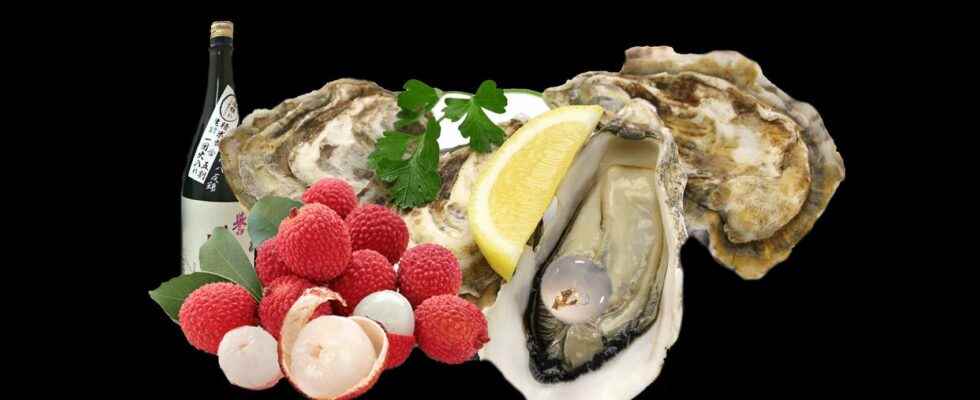This recipe offers a double explosion in the mouth, both in terms of textures and flavors. Encapsulation is a gelation technique, based on the fact that sodium alginates (long chain polysaccharides) can bind together with calcium (bridging agent). When the drop falls into the calcium, a thin film of gel forms and retains the liquid in the core. Bitten within a minute, the ball pierces in the mouth and explodes. The fragrant liquid floods the palate and tongue. Tender (but firm) oyster, liquid and fine jelly: explosion of textures!
In the recipe proposed here, we also play on a particular association of products, whose flavors go together (food pairing). Indeed, spectroscopic measurements show that lychee, oyster and sake have many common molecules. Thus, these molecules stimulate identical receptors and the brain only perceives coherent information: the marriage of flavors is perfect! The lychee contributes floral and fresh notes that counterbalance the iodized and oily notes of the oyster. Sake, a volatile alcohol, rises in the retronasal passages and also ensures floral persistence.
If cooking is a matter of taste… it is also a matter of flavors: “Without the participation of the sense of smell, there is no complete tasting”, wrote Brillat-Savarin, a French gastronome and magistrate (1755 -1826), in its Physiology of taste. But what are these aromatic molecules? Why do some evaporate while others create flavor? Where do flavor molecules come from? How to preserve, isolate and harmonize them? Raphaël Haumont explores the chemical mechanisms of taste and reveals how to awaken our senses in the kitchen by playing on scents and flavor associations, delivering a few recipes to make at home. A complex chemical partition, at the heart of culinary emotion.
